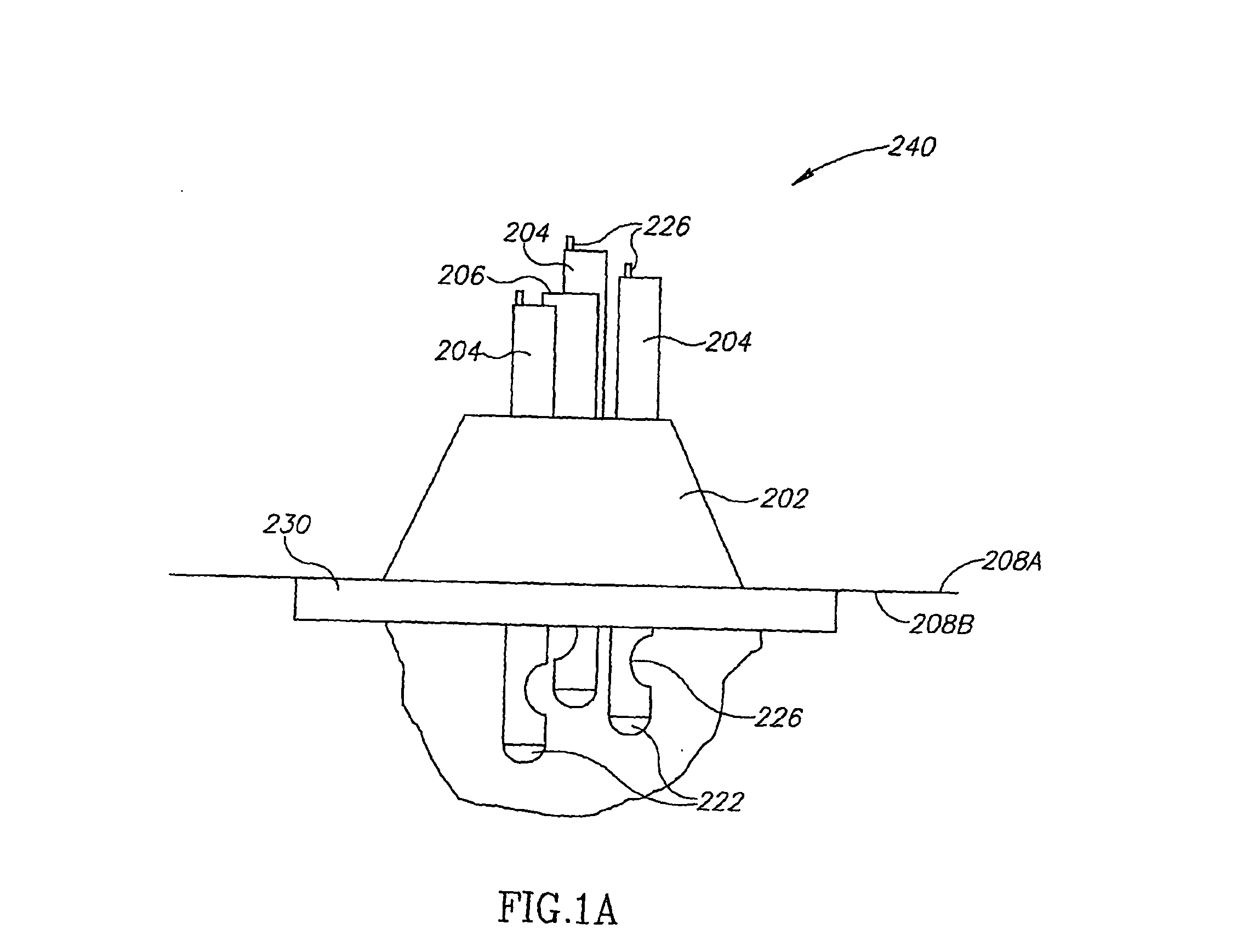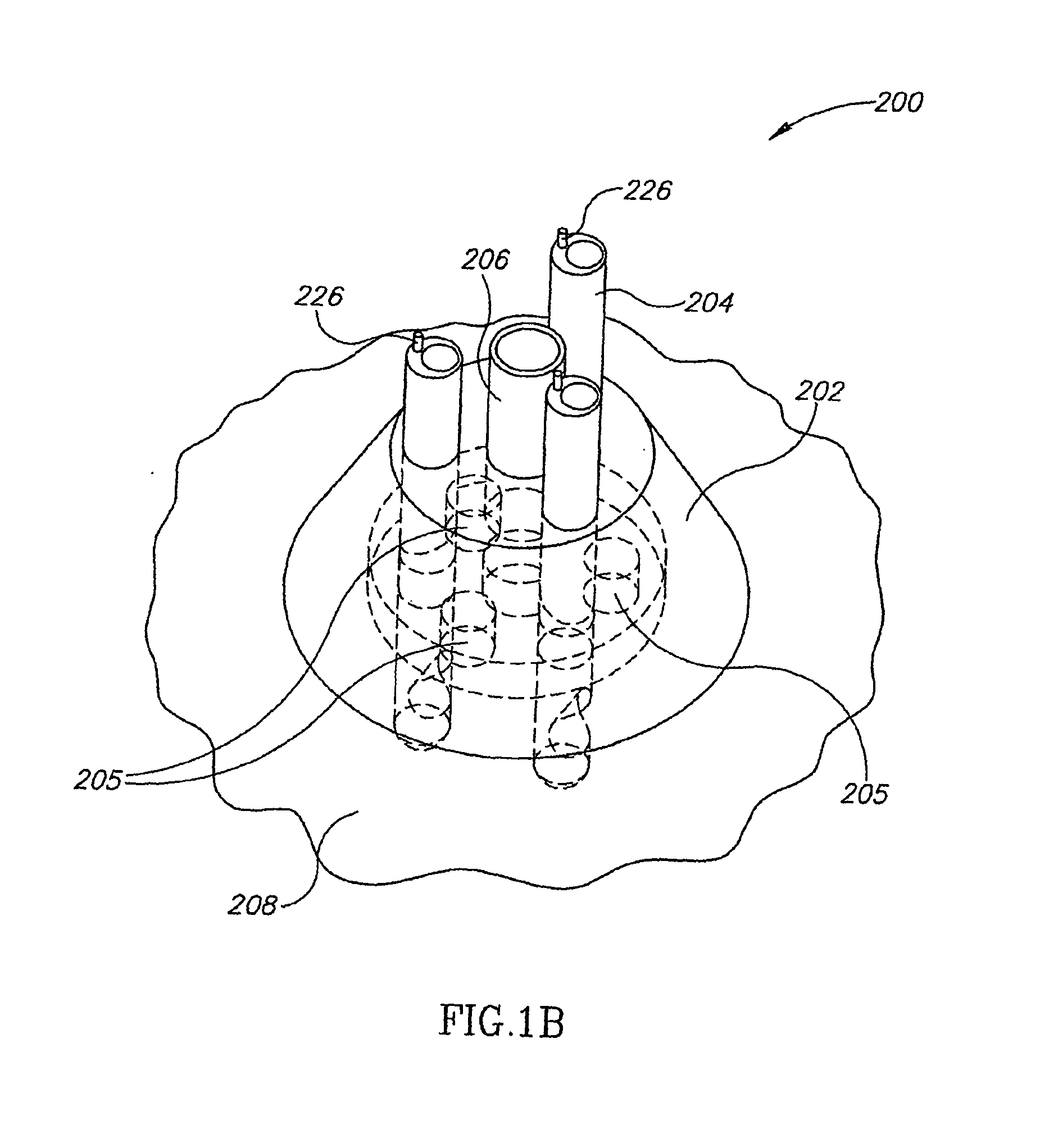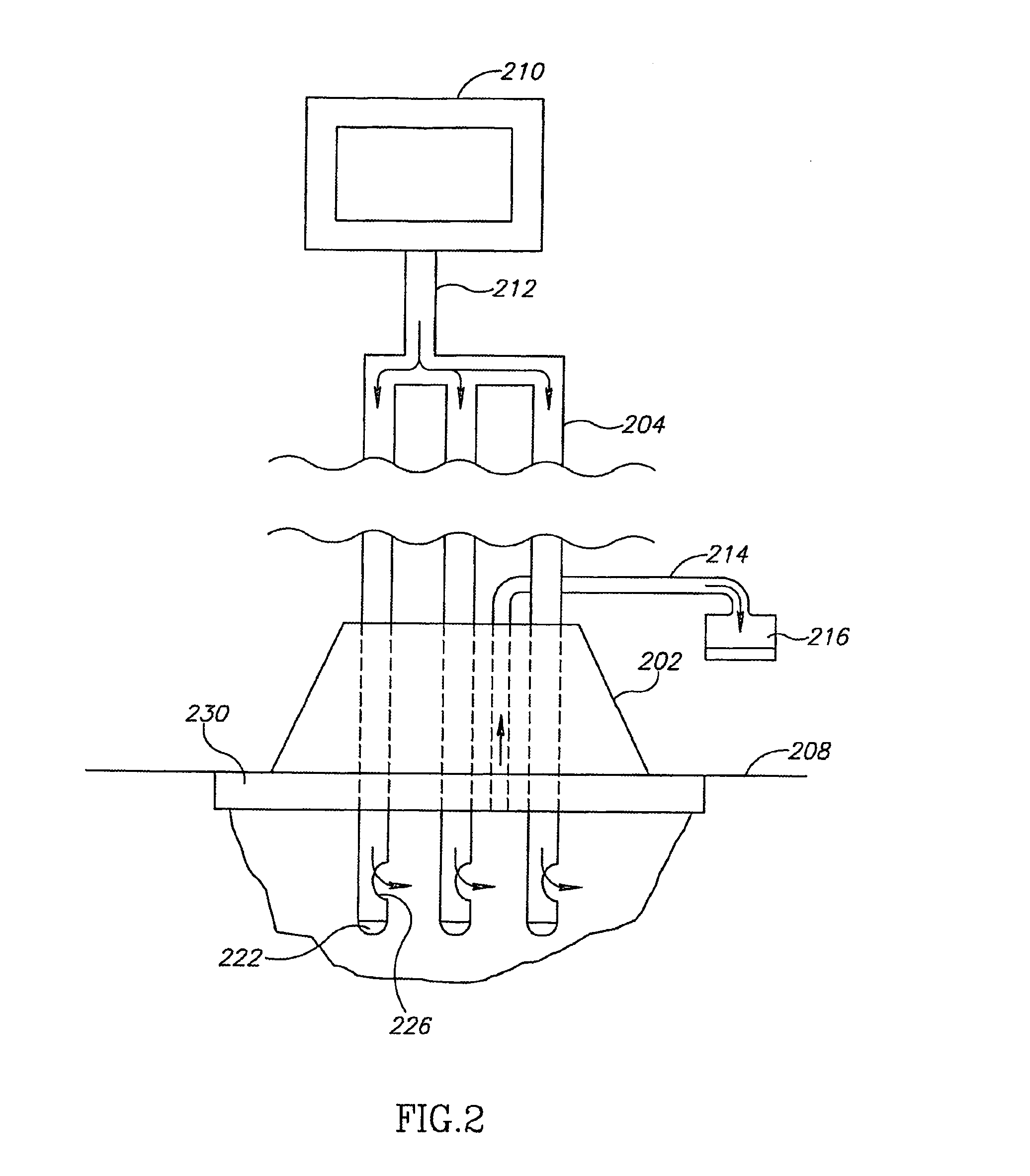Apparatus and methods for enzymatic debridement of skin lesions
a technology of enzymatic debridement and skin lesions, which is applied in the direction of wound drains, peptide/protein ingredients, therapy, etc., can solve the problems of severe skin damage, life-threatening, and the inner layer of the skin is no longer protected from the external environment, so as to achieve efficient debridement and enhance healing
- Summary
- Abstract
- Description
- Claims
- Application Information
AI Technical Summary
Benefits of technology
Problems solved by technology
Method used
Image
Examples
example 1
Enzymatic Debridement Using the Appartus and Methods of the Invention
Materials and Methods
[0178] The streaming system consisted of: a feeding reservoir, connecting inlet / outlet tubes, peristaltic pump (MP4 Minipulse 3, Gilson, France), a disposable applicator designed to direct the flow onto the treated site and a collecting vessel.
[0179] Animals and Tissue samples: The study was performed on groups of six 4-8 week-old [30-40 g body weight] male and female white mice, on groups of six mature (2-3 months old, 200-250 g body weight) Charles-River male rats, on adult male new-Zealand white (NZW) rabbit (3 kg body weight) and on pig skin samples. Mice and rats were anaesthetized with Avertin (0.1 ml of 1.25% tribromoethanol in saline per 10 g body weight; Sigma, USA) and the rabbit was sedated by ketamine rompun and anaesthetized with thiopenton sodium (Abbott Laboratories, Italy). The skin at the treatment area was shaved, animals were positioned on a jack and lifted until the appl...
example 2
Enzymatic Removal of Epidermis
[0197] Using an apparatus including applicator 24 illustrated in FIG. 12, an enzyme solution containing Collagenase (1 mg / ml, Sigma Cat. No. C0130) and Thermolysin (0.5 mg / ml, Sigma type x, Cat No. P1512) in 0.1 M PBS buffer, pH 7.5, was applied onto a skin sample freshly removed from an adult female large-white pig (1 year old, 90 kg), mounted on a flat holder and pre-cleaned with 70% (v / v) aqueous ethanol, at a flow rate of 3-4 ml / hour for 3 hours at room temperature.
[0198] Following this treatment and detachment of the apparatus, complete hair removal from the treated area, accompanied by the formation of smooth, crater like removal of skin volume was macroscopically observed. The skin sample was immediately fixed in neutral buffered formalin (4% v / v) for 48 hours. The skin was then rinsed with distilled water, dehydrated in alcohol and embedded in paraffin. Stained histological serial sections (0.8 μm thick) were prepared in a plane parallel to th...
PUM
| Property | Measurement | Unit |
|---|---|---|
| flow rate | aaaaa | aaaaa |
| volume | aaaaa | aaaaa |
| volume | aaaaa | aaaaa |
Abstract
Description
Claims
Application Information
 Login to View More
Login to View More - R&D
- Intellectual Property
- Life Sciences
- Materials
- Tech Scout
- Unparalleled Data Quality
- Higher Quality Content
- 60% Fewer Hallucinations
Browse by: Latest US Patents, China's latest patents, Technical Efficacy Thesaurus, Application Domain, Technology Topic, Popular Technical Reports.
© 2025 PatSnap. All rights reserved.Legal|Privacy policy|Modern Slavery Act Transparency Statement|Sitemap|About US| Contact US: help@patsnap.com



